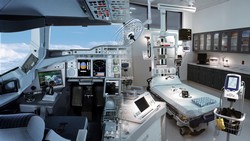Age-related motor deficits
Various parts of the brain, collectively called the supraspinal motor centres, cooperate to control movement and locomotion. Ageing and neurodegenerative conditions such as Parkinson’s disease (PD) damage the motor centres, yet in ways not fully understood. The EU-funded MOVING BEYOND(opens in new window) (Industrial academic initial training network towards focused treatment of age-related motor symptoms) project studied the role of supraspinal motor centres in ageing and PD. The research addressed such roles at all levels, from basic understanding of mechanisms to diagnostics and potential therapeutic applications, with emphasis on the basal ganglia. Team members established a knowledge exchange network involving secondments and a training programme. Results of the research helped improve understanding of supraspinal motor control. Specifically, the work yielded a basic model of supraspinal control mechanisms. Researchers achieved the result by examining how age and PD affect probabilistic task cueing. This phase of the study involved determining the mechanistic regulation of gait dynamics during ageing. Additionally, MOVING BEYOND gained an evolutionary perspective by investigating functional motor control in the primitive lamprey fish. Other developments included improvements to diagnosis of supraspinal movement control deficits via a study of patients’ walking ability. The team analysed gaits using body sensors and from daily living, which revealed preclinical and progression parameters for PD. The analysis predicted risk of falling and assessed quality of life for PD patients. The team also developed and analysed several new treatments for supraspinal movement control deficits, including freezing of gait in PD patients. Researchers developed, implemented and validated a novel algorithm for the gait robot Lokomat. The algorithm, which includes computerised visual feedback, assesses gait ability in patients with mild to severe walking impairments. The algorithm automatically adjusts support provided by the robot, based on patient performance during walking. Finally, researchers assessed the potential of using virtual reality for research. MOVING BEYOND disseminated its findings via conferences, scientific publications and the project website. Staff presented the developments to a lay audience during outreach events. The project’s training programme helped develop a group of young and innovative researchers able to contribute new therapeutic ideas. The resulting new diagnostic methods will help improve treatments.







